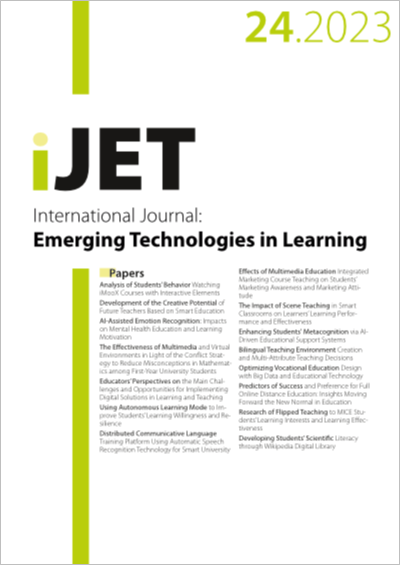Using Autonomous Learning Mode to Improve Students’ Learning Willingness and Resilience
DOI:
https://doi.org/10.3991/ijet.v18i24.45641Keywords:
learning willingness, learning resilience, interactive autonomous learning mode, grey prediction model, TOPSIS analysis method, grey relation projection methodAbstract
In China, English teaching has become a key part of the education system at all levels. However, despite the significant resources invested in the education system, many students lack the necessary motivation and perseverance to learn. The interactive autonomous learning mode is a newly emerged educational approach that aims to enhance students’ motivation and resilience in learning through interaction and self-motivation. Existing works mostly focus on qualitative analysis and case studies; however, few have comprehensively considered the multiple factors or the future trend. To address this research gap, this paper proposes three novel research methods: predicting future learning willingness using a grey prediction model, evaluating the effectiveness of a learning resilience enhancement strategy using the TOPSIS analysis method, and analyzing the relationship between learning willingness and learning resilience enhancement using an improved grey relation projection method. These methods not only provide a comprehensive and accurate analytical framework, but they also contribute to educational reform and teaching practice.
Downloads
Published
How to Cite
Issue
Section
License
Copyright (c) 2023 Nan Zhang (Submitter); Jianjun Yu

This work is licensed under a Creative Commons Attribution 4.0 International License.



